Texturing a wall is a great idea to give a new life to ceilings and walls. And when you do it yourself, this will become Pocket-friendly too. When you retexture the walls, it further adds a unique and exciting touch to your old and bare walls. It might sound tiring to do it on your own. But in reality, it is a pretty simple task. With the help of the right equipment and tools, you can do this in no time. Today we’re going to tell you: how to texture a wall with common supplies.
Doesn’t matter whether you want to repair your ceiling or just want to fill the unpleasing drywall seams, these techniques will surely help you out. In this blog, we have explained everything in detailed steps.
With the help of various objects such as combs, sponges, and whisk brooms can be used to retexture a wall or ceiling. This helps to gain the finished and polished walls, which look stunning. This blog helps you to learn how to texture drywall for various textures. So let’s start the texturing procedure.
Types of Texture Paints

The first thing is to choose a texture or pattern. They can be used even to add extra beauty to the ceiling or to repair the unwanted seam lines. There are many types of textures, such as:
- Smooth texture paint
- Sand texture paint
- Knockdown texture
- Popcorn texture
- Orange peel texture
If you want to know more about the various types of ceiling textures, then read our blog, which has 20+ unique texture types and decide which one you want on your wall or ceiling. After you pick one texture, it’s time to start the process.
What You’ll Need
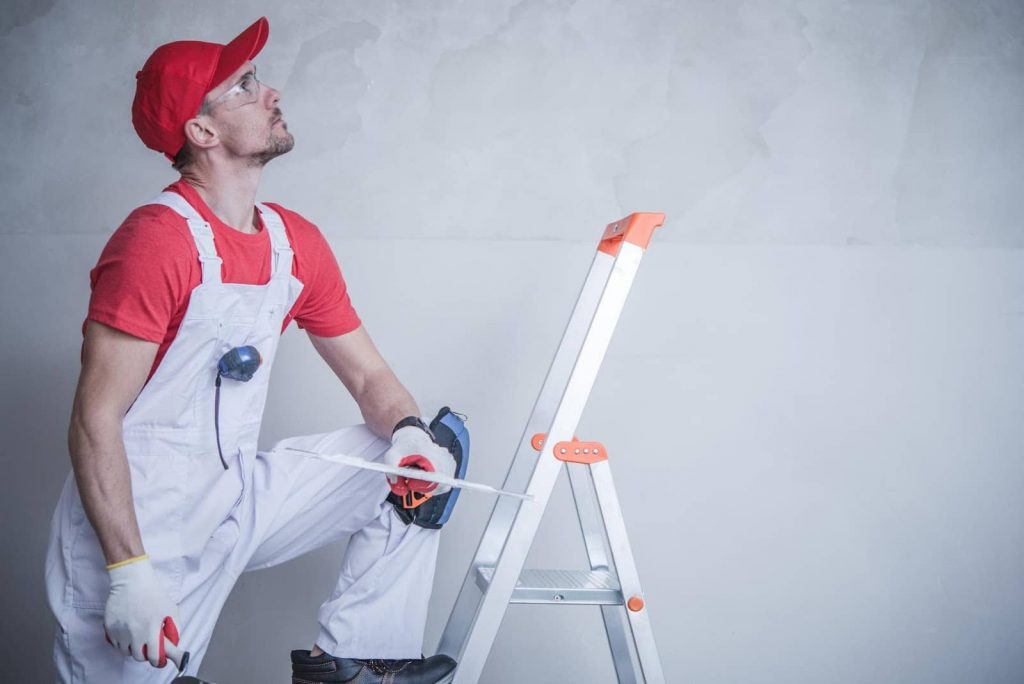
Here is the list of necessary tools and materials that you’ll be required to texture a wall. All these items you may already have, and if not, then they’re easily available in the market, you can buy them.
| TOOLS | MATERIALS |
| Drop cloths | Painter’s tape |
| Plastic sheeting | Drywall compound |
| Drywall knife | Flat paint or drywall primer |
| Drill and paint mixer attachment | Paint |
| Paintbrush | |
| Paint tray | |
| Trowel | |
| Paint roller and cover | |
| Sponge |
Working Time: 30 mins
Total Time: 4 hrs
Skill Level: Beginner
Estimated Cost: $20 to $30
How to Texture a Wall
Today in this blog, we’re going to tell you four different ways to texture a wall. So whether you want an orange peel or ridged texture on your wall or ceiling, by following these simple steps, you can achieve any pattern or texture. so, let’s begin with the first method:
1. How to Texture a Wall with Joint Compound
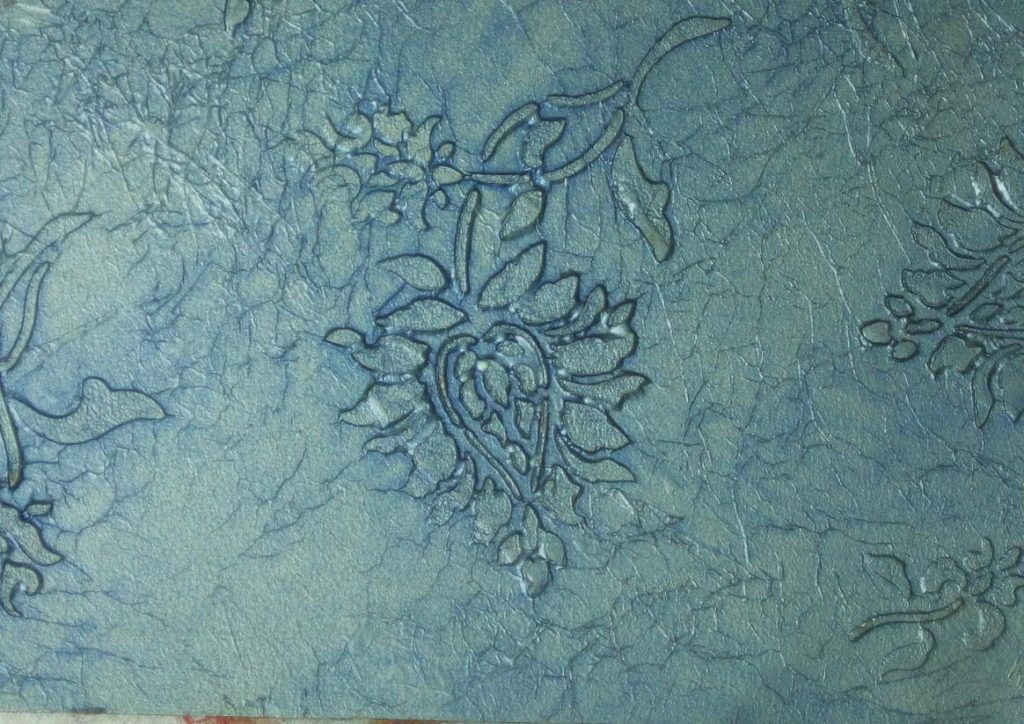
- The first step is to clean the walls, then let them completely dry.
- Now combine the joint compound with the water as per the instructions written on it. It should have a consistency of a thick batter.
- Use a wide putty knife or a trowel to spread it on the wall.
- And after that, whatever texture you want, you can use the tools accordingly to create the desired texture.
TIP: For example, if you want a cross-hatched texture, use a notched trowel and draw lines in the joint compound.
- Once you textured the entire wall, check whether there is any requirement to do touch-ups. Add the joint compound in the required spaces.
- Before you start painting, allow this to dry completely for at least 24 hours.
2. How to Texture a Wall with a Texture Sprayer

If you want to texture your wall in the orange peel or in popcorn texture, you’ll definitely need a sprayer. By the way, it is the easiest way to texture a ceiling or wall.
Just follow these steps:
- The first step is always cleaning the surface of the wall. Whether you’re texturing your wall or ceiling, first clean them and then leave them to dry.
- Then cover all the furniture, floors as you don’t want to ruin them, right?
- Combine the joint compound with water then add it to the sprayer’s hopper.
- After adjusting the nozzle, use slow motions to spray onto walls.
- After you’re done spraying on the whole wall, leave it for dry for at least 24 hours, then you can start painting.
3. How to Texture a Wall with a Sponge

With the help of a simple paint sponge, you can create a beautiful faux texture.you can also finish this in less time as it takes less time in drying. So let’s know how to do this sponging technique:
- If you want two texture wall effects, then first paint the wall in a base color and let it dry completely.
- After that, soak your sponge in the paint of different contrasting colors or the same color (depending on what kind of texture you want) for a more striking and elegant look.
- Then dab dab dab..repeat this step to create a random texture pattern until the entire wall is filled with the design.
TIP: For more natural patterns, use sea sponges, and for uniform & rectangular patterns, use a synthetic sponge. Both are easily available in the market.
4. How to Texture a Wall with a Roller
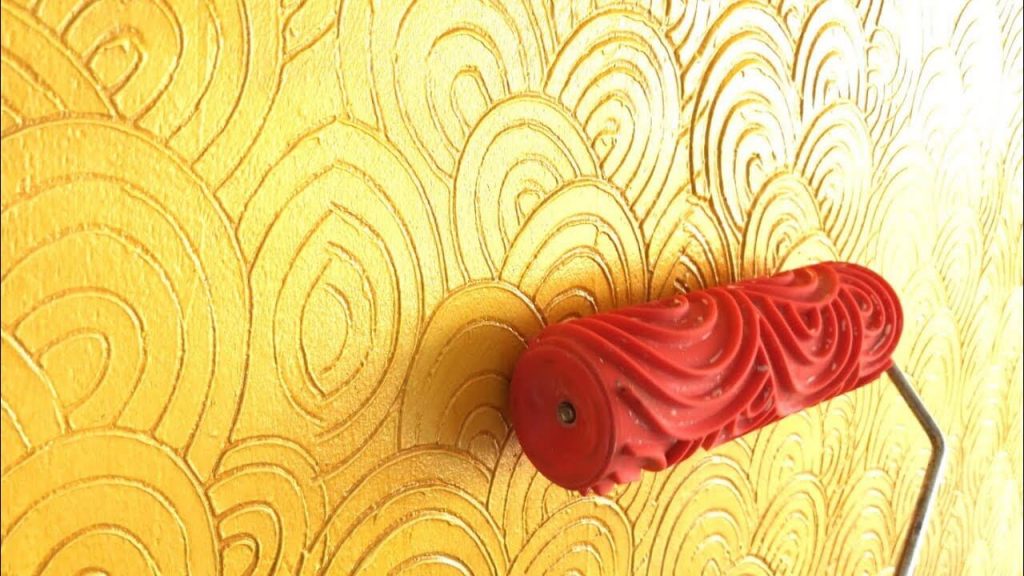
Another easy way to texture a wall is by using a paint roller. This is a very simple technique and also quite popular among people. You can use this technique to create both kinds of texture: textured paint or faux finish.
Texturing with Joint Compound or Textured Paint
- You already know the first two steps, right? Yes, clean the walls and mix the joint compound with water.
- After that, pour this mixture into a paint tray, then soak the roller in it, and roll over on the wall.
- Wait for some time so that the joint compound will settle on the wall, then again roll over.
- By doing this, a wonderful 3D texture will occur on the walls, which look absolutely beautiful.
- Use a brush for the corners and then let it dry for 24 – 48 hours.
Texturing with Paint for a Faux Finish
- After cleaning the wall or ceiling, paint the wall in a base color and allow it to dry.
- Then take a stencil or a thick nap roller and with the help of a complimentary glaze paint the wall. You can also use the secondary color. That’s it!! and your faux finished wall is ready!!
TIP: If you want something different and unique you can achieve it by using various types of painting tools and techniques.
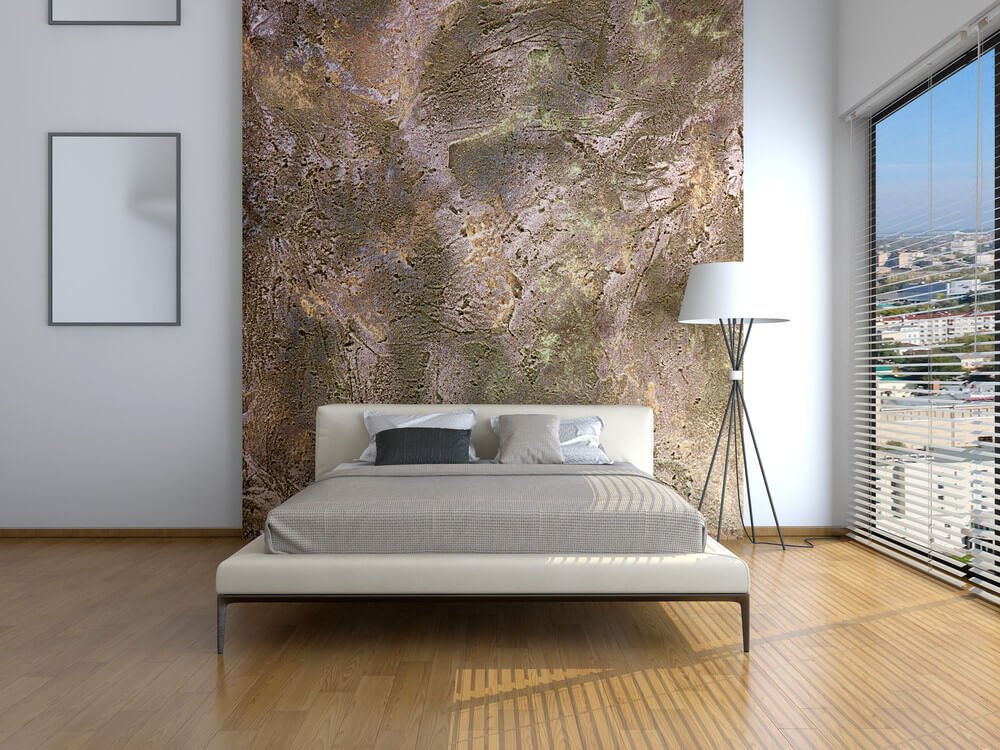
Wall Texture Tips & Tricks
- Always prepare the wall with a drywall primer before applying the joint compound.
- It is advised to strip the existing texture before applying a new one to get a more finished look.
- For acoustic and popcorn ceiling repairing, touch up spray is available in the market.
- To highlight the textures, you can also use satin paint on top of a wall or ceiling.
Easy, Fast and Budget-Friendly
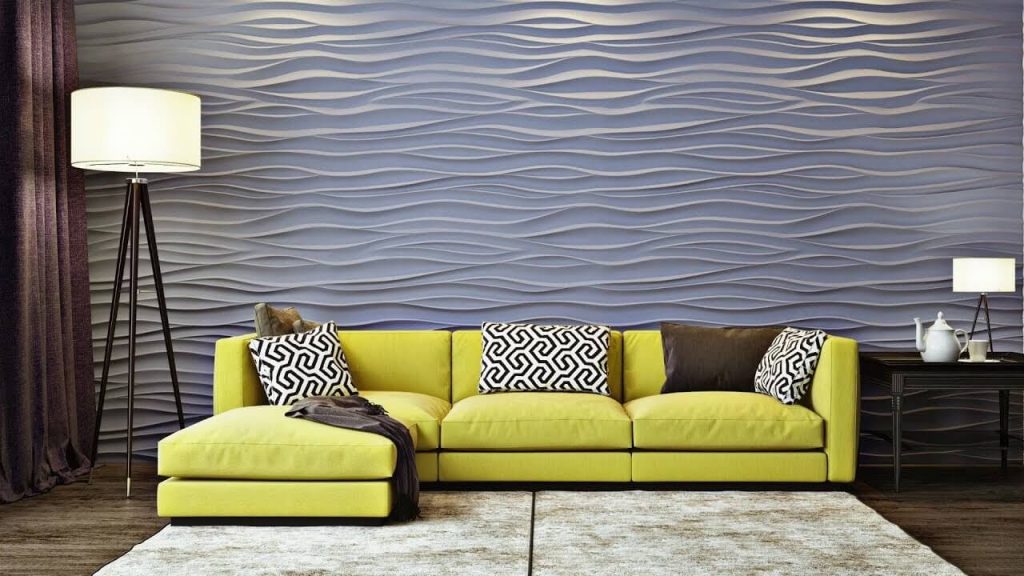
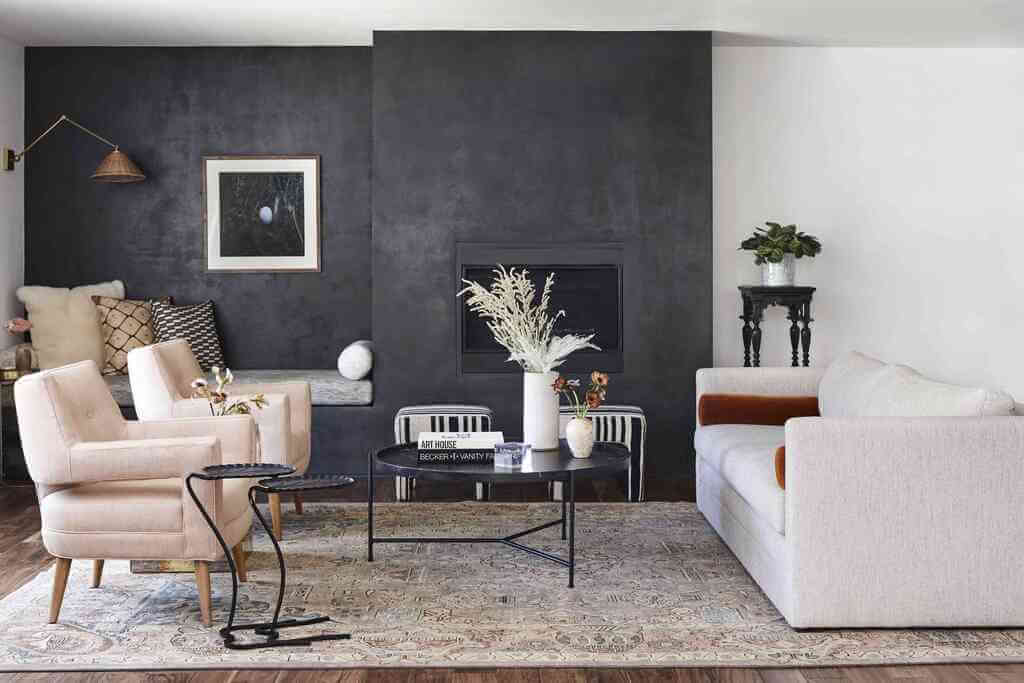
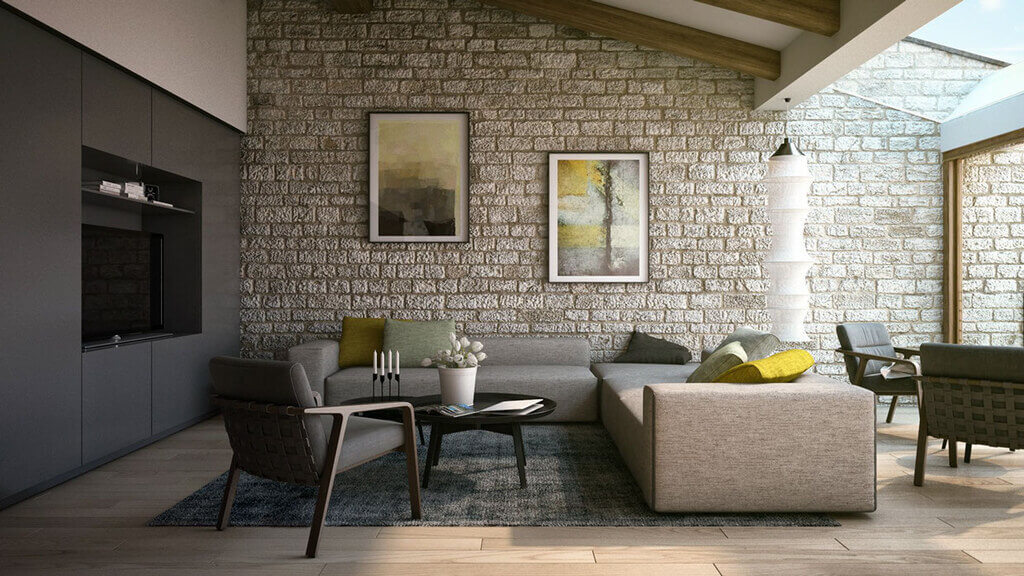
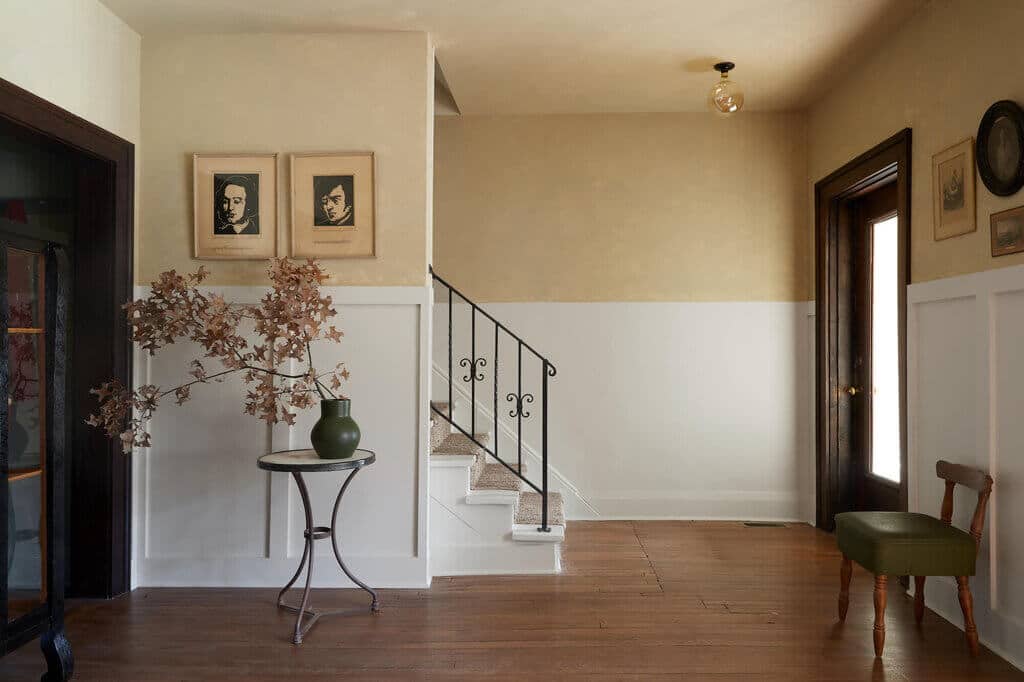

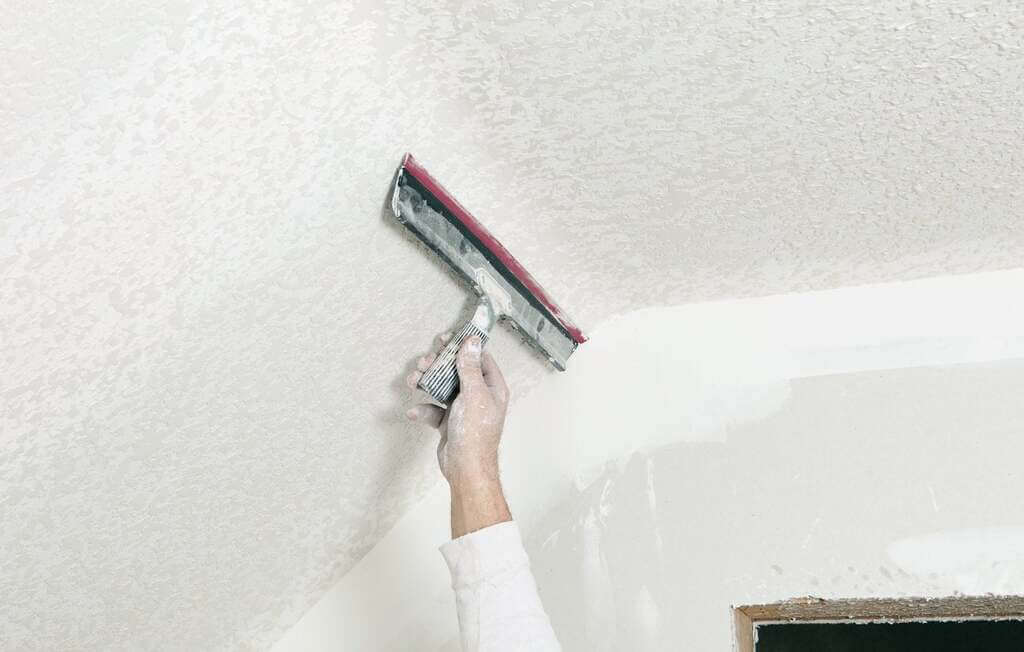

Once you know how to texture a wall, you can experiment with various techniques and patterns. This is an effortless DIY project and we’re pretty sure you’ll enjoy doing it. It also requires low cost and simple tools & supplies, which is also easy on our pockets, right?
But if you’re planning to cover large areas, it’s better to call a professional. Other than that, you can easily decorate your walls and ceilings all by yourself. The whole process is fast, and also it has less drying time. I hope this guide will help you, and you’ll end up with beautiful texture looking walls.
Explore Further:–

